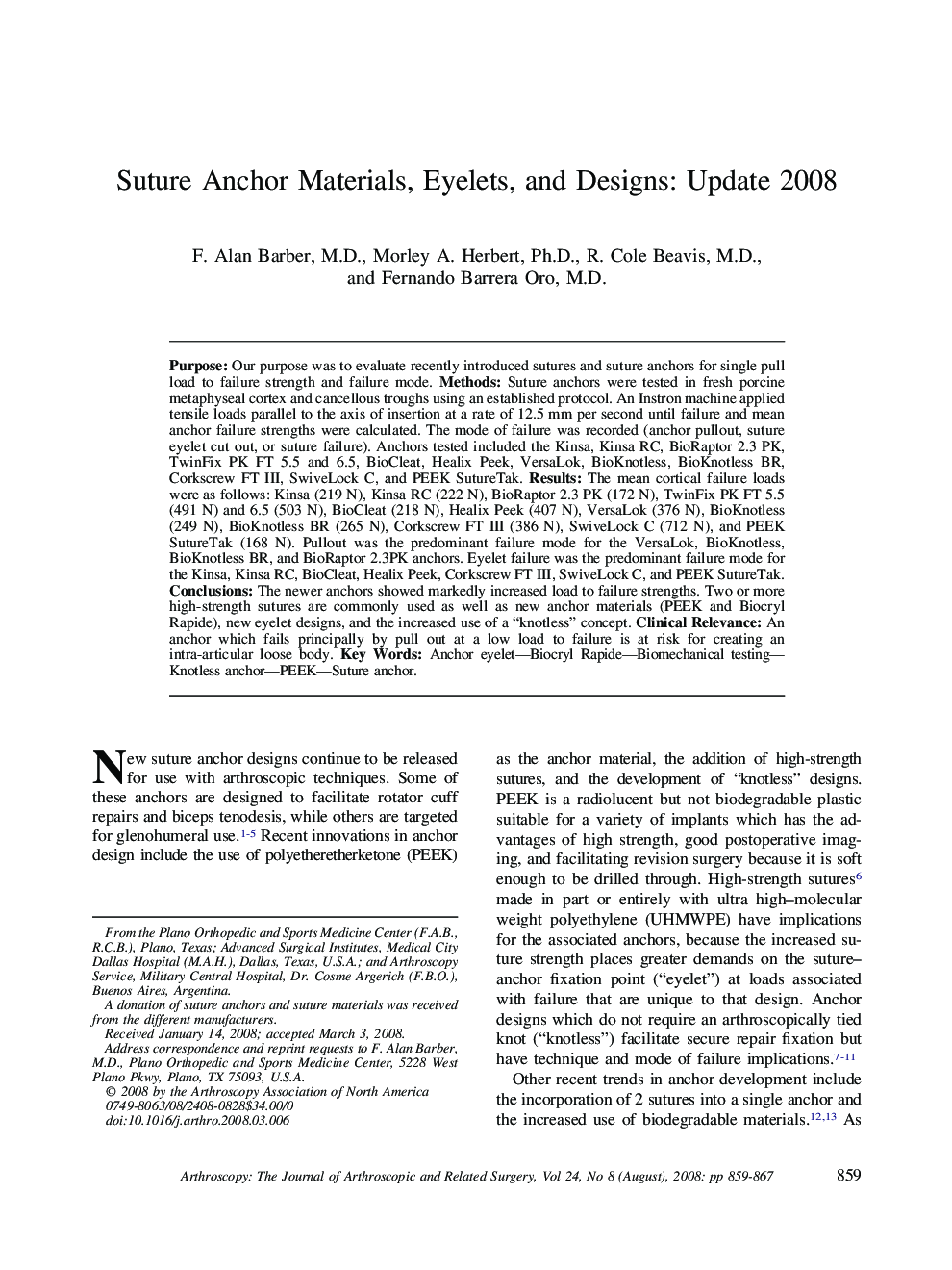| Article ID | Journal | Published Year | Pages | File Type |
|---|---|---|---|---|
| 4047128 | Arthroscopy: The Journal of Arthroscopic & Related Surgery | 2008 | 9 Pages |
Purpose: Our purpose was to evaluate recently introduced sutures and suture anchors for single pull load to failure strength and failure mode. Methods: Suture anchors were tested in fresh porcine metaphyseal cortex and cancellous troughs using an established protocol. An Instron machine applied tensile loads parallel to the axis of insertion at a rate of 12.5 mm per second until failure and mean anchor failure strengths were calculated. The mode of failure was recorded (anchor pullout, suture eyelet cut out, or suture failure). Anchors tested included the Kinsa, Kinsa RC, BioRaptor 2.3 PK, TwinFix PK FT 5.5 and 6.5, BioCleat, Healix Peek, VersaLok, BioKnotless, BioKnotless BR, Corkscrew FT III, SwiveLock C, and PEEK SutureTak. Results: The mean cortical failure loads were as follows: Kinsa (219 N), Kinsa RC (222 N), BioRaptor 2.3 PK (172 N), TwinFix PK FT 5.5 (491 N) and 6.5 (503 N), BioCleat (218 N), Healix Peek (407 N), VersaLok (376 N), BioKnotless (249 N), BioKnotless BR (265 N), Corkscrew FT III (386 N), SwiveLock C (712 N), and PEEK SutureTak (168 N). Pullout was the predominant failure mode for the VersaLok, BioKnotless, BioKnotless BR, and BioRaptor 2.3PK anchors. Eyelet failure was the predominant failure mode for the Kinsa, Kinsa RC, BioCleat, Healix Peek, Corkscrew FT III, SwiveLock C, and PEEK SutureTak. Conclusions: The newer anchors showed markedly increased load to failure strengths. Two or more high-strength sutures are commonly used as well as new anchor materials (PEEK and Biocryl Rapide), new eyelet designs, and the increased use of a “knotless” concept. Clinical Relevance: An anchor which fails principally by pull out at a low load to failure is at risk for creating an intra-articular loose body.
